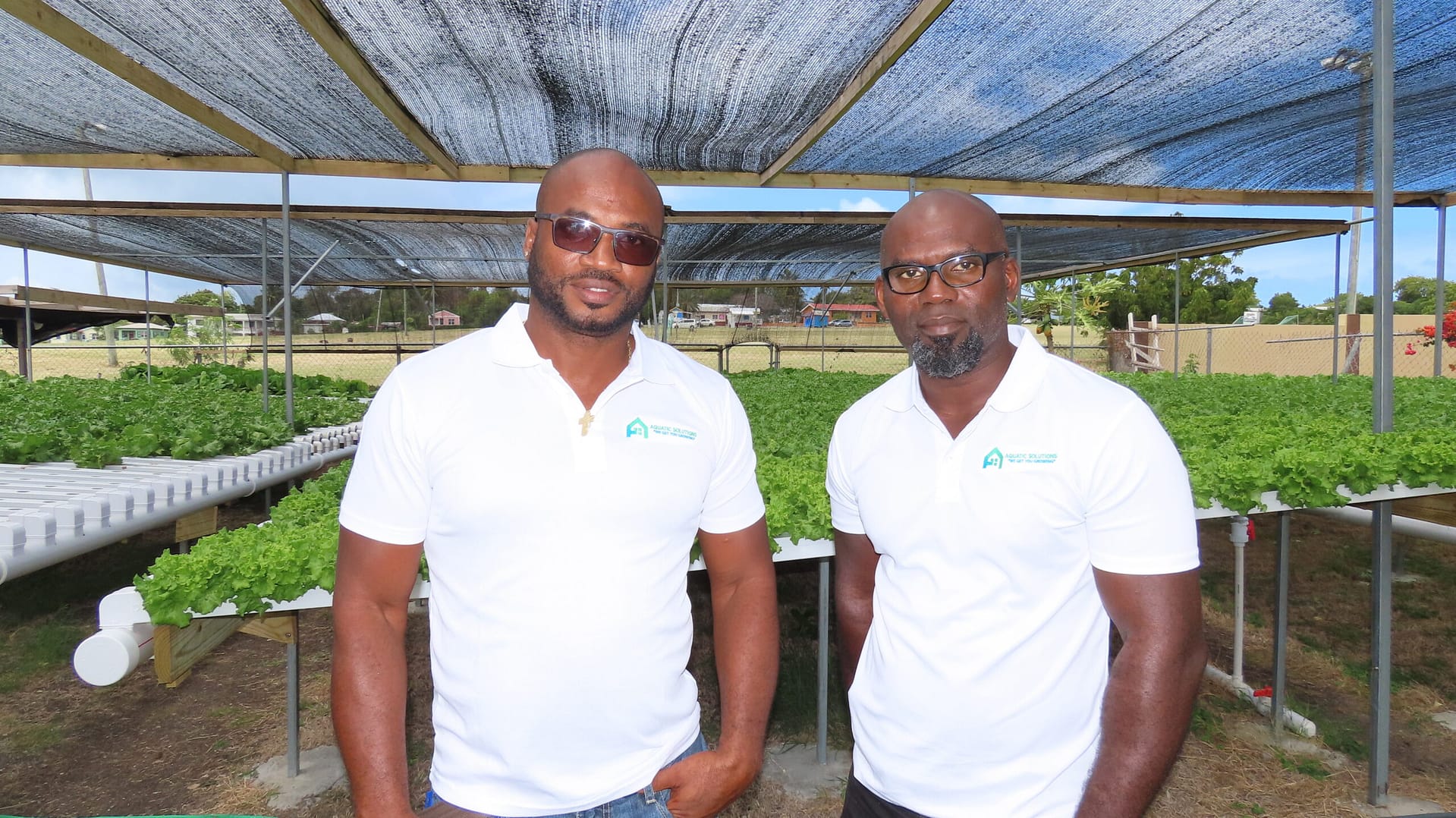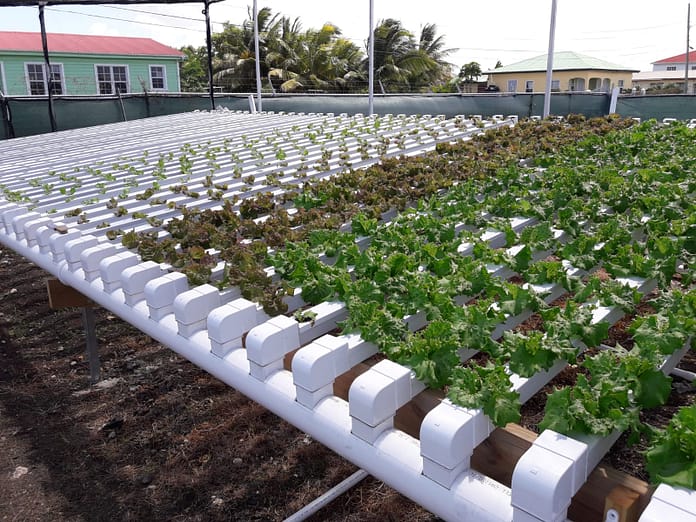
With traditional farming facing so many challenges and more persons tapping into the new technologies available for growing, Alfred Brazier of Shaade Hydroponics and Wayne Gardener of Lincoln Farms have embarked on a business venture, which is a one-stop shop to get persons growing in these new ways with their brainchild, Aquatic Solutions.
Aquaponics is the integration of aquaculture, which is fish farming, and hydroponics, which is growing vegetables in a soil-less culture, mainly water. In aquaponics, the nutrients are harnessed from the fish to grow the vegetables through filtration methods.
Aquaponics creates a natural ecosystem where there are things functioning in a controlled environment, in the way it works in the wild. Every life form is represented; they have fishes as the animals, vegetation as the lettuce/ plants and bacteria that is microorganisms.
Lincoln farms, has a capacity of 3,300 plants (lettuce) per week and on the fish side a capacity of 3,000 pounds of fishes monthly, with the ability to double if necessary.
Shaade Hydroponics has a capacity of 1,200 plants per week and currently sell kale, mint and their main crop, lettuce.
Gardner and Brazier refer to Aquatic Solutions as their brainchild, and it came about due to numerous inquiries about their systems and recognized that there was a need for it and persons did not know where to go to find information, or who can design and build a system.
Aquatic Solutions is a one stop shop for solutions to anything that may be encountered whether it be to design or build a system, troubleshoot problems in existing systems, maintain and manage systems and they also sell all equipment that may be used for any type of system. They ensure that everyone is involved so they make systems for backyard gardeners or commercial systems.

“We try to do systems in a modular fashion now, so that if your budget only allows for you to do a certain amount now, we can add to it as your budget allows you to. So don’t think you have to have a large sum of money to begin, whatever you have, we will see how best we can work and we will try to get you started and growing,” explains Gardener.
Once systems are built, they ensure to provide support in the means of answering questions or regular maintenance checkups.
Another component of Aquatic Solutions is to create a community for persons who are involved in either aquaponics or hydroponics so that persons are able to help each other, as this was how Gardener and Brazier met and established a friendship and partnership.
Since starting Aquatic Solutions, Gardener mentions that they have realized that quite a few persons have wanted to get into this new agricultural technology but just did not know how to do it or where to start.
Brazier mentioned that the intent is to get as much persons as possible familiar with hydroponics and aquaponics and get persons growing in both areas, as the traditional way of farming is facing many challenges especially due to the climate.
“In a few months from now, we will have a shortage of lettuce on the market because farmers will face difficulties in terms of water and the heat, however, with our systems, we are producing year round,” explains Brazier.
As time advances and climate change evolves we must find ways and means of adapting to the changing conditions and persons need to know about these things and to know that the way to progressing the sector to adapt.
“Not because we are third world means we have to apply all third world methods and strategies, this technology is what First world countries are using,” explains Gardner.
Gardner explains that on his farm, at any given time he has approximately 20,000 plants and if that amount were planted in the soil, it would take up a much larger footprint than what his farm occupies. Additionally, it would take about 6,000 – 8,000 gallons of water per day if it were to be done in the soil, whereas the water consumption on his farm for that capacity is about 3,000 gallons weekly.
The duo intends to put on a series of workshops in the near future for those persons who would like to know more about the system and how it functions.
Hydroponics and Aquaponics has many advantages over traditional farming, such as; it is climate smart, which means that it is resilient to any climate, the systems are covered which means that there is limited exposure to sunlight, which ensures minimal evaporation, and persons are able to save water. In addition, since it is soil less way of growing there are no weeds, it is also much less labor intensive in terms of maintenance.
Brazier explains that he thinks that hydroponics and aquaponics is future of farming and is the way to go. He also urges persons to move away from the misconception that hydroponics and aquaponics can only grow lettuce as everything that can be grown in the soil can be grown hydroponically or aquaponically based upon the growing medium selected like rooting crops such as onions, potatoes and even carrots.
Advertise with the mоѕt vіѕіtеd nеwѕ ѕіtе іn Antigua!
We offer fully customizable and flexible digital marketing packages.
Contact us at [email protected]

















Thought Antigua had a water problem
If you knew the technology, you wouldn’t be making that statement. It uses less water. The water recycles itself and only that which vaporizes needs to be replenished.
@From The Sideline….
A…you still need the traditional farming methods for tubers, roots(for medicine), many fruits etc.
B…while Aqua/hydro-ponics MUST be incorporated into the long term planning, other aspects which balances nature and the environment such as bees for pollinations, insects, and other animal life depend heavily on traditional farming for their survival.
A balance must be created with the various methods
Yes very interested for our society
Comments are closed.